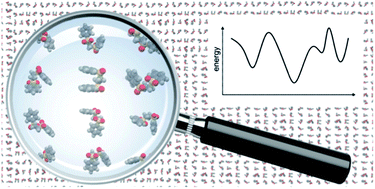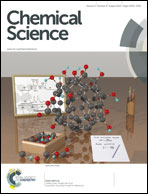Which conformations make stable crystal structures? Mapping crystalline molecular geometries to the conformational energy landscape†
Abstract
The ability to anticipate the shape adopted by flexible molecules in the solid state is crucial for engineering and predicting crystal packing and, hence, properties. In this study, the conformations adopted by flexible molecules in their crystal structures are assessed in terms of their relationship to the calculated global conformational landscape. The study quantifies the limits on molecular strain that can be induced by intermolecular interactions in single-component crystal structures of molecules with no intramolecular hydrogen bonding, demonstrating that some molecules are distorted by up to 20 kJ mol−1 by crystal packing forces. Furthermore, we find that crystallisation often selects high energy conformers, but only when the high energy conformer is more extended than the lower energy options, allowing for greater intermolecular stabilisation. Based on these observations, we propose that the crystallisability of conformers is assessed in terms of their energies and surface areas. We formulate this as a parameterised pseudo-energy related to molecular surface area, which leads to a dramatic improvement in our ability to predict the conformations adopted by molecules in their crystal structures.


 Please wait while we load your content...
Please wait while we load your content...